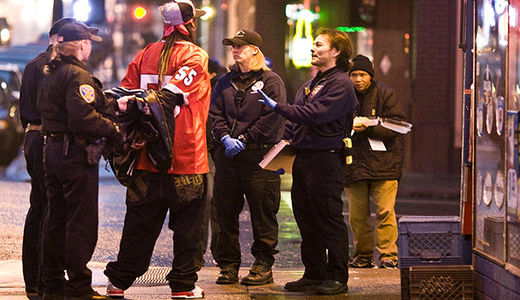
As the country prepares to go to the ballot box in two weeks, voters would do well to recall the long-term effect of Republican Contract with America polices.
Get-tough-on-crime programs in the 1990s, for example, resulted in the U.S. today boasting the highest incarceration rates in the world. With five percent of the world population, the U.S. has close to 20 percent of its prisoners. Over one in 100 persons today are in jail.
The huge prison population has placed enormous strain on already stressed state budgets and exacerbated a troublesome poverty-to-prison-to-poverty cycle.
In many states more is spent on maintaining the prison population than on public education. The Justice Policy Institute writes, “States spent $52 billion on corrections in FY2008, reducing resources available for investments in social structures, like education and health care.”
Today, state spending on prisons is second only to Medicaid.
Indeed, according to the National Association of State Budget Officers, “the budget item that grew the fastest for states between 2005 and 2009 was corrections (25.3 percent), more than elementary and secondary education (24.1 percent) and higher education.”
According to the Pew Center on the States, one in 31 persons are under the control of state or federal correction authorities. For Black men the figure is one in ten.
A new study by Bruce Western of Harvard and Becky Pettit of the University of Washington in Daedalus shows the direct correlation between the rising prison population and deep systemic poverty, an equation that rises with the onset of GOP policies.
In 1980, for instance, “one in 10 Black high-school dropouts were incarcerated. By 2008, that number was 37 percent,says Slate’s Sasha Abramsky. Over 70 percent of these dropouts are unemployed.
New York City has one of the highest dropout rates in the country. “With just 45.2% of city public school kids earning on-time diplomas [in 2004] only Dallas, Minneapolis, Columbus, Baltimore, Cleveland, Indianapolis and Detroit saw a lower percentage of students succeed,” writes the New York Daily News.
New York City claims a nine percent increase in the graduation rate since 1994. Detroit’s rate is a startling 25 percent.
With those who manage to get jobs the situation gets even worse. Abramsky writes that “Western and Pettit found that after being out of prison for 20 years, less than one-quarter of ex-cons who haven’t finished high school were able to rise above the bottom 20 percent of income earners, a far lower percentage than for high-school dropouts who don’t go to prison. They conclude that the ex-cons end up passing on their economic handicap, and by extension the propensity of ending up behind bars, to their children and their children’s children in turn.”
With former prisoners facing job and housing discrimination (employers and landlords reluctant to hire and rent); and in most states prevented from voting, this generational poverty comes as no surprise, but is at least partially the result of deliberate policy choices.
If the tea party and their big business gain influence in the new Congress, this crisis is likely to grow even worse.
Clearly radical reforms are needed to end systemic discrimination against ex-offenders. This must be part of a long-term strategy of giving real hope to the nation and defeating the extreme right.
Image: Thomas Hawk // CC BY-NC 2.0












Comments